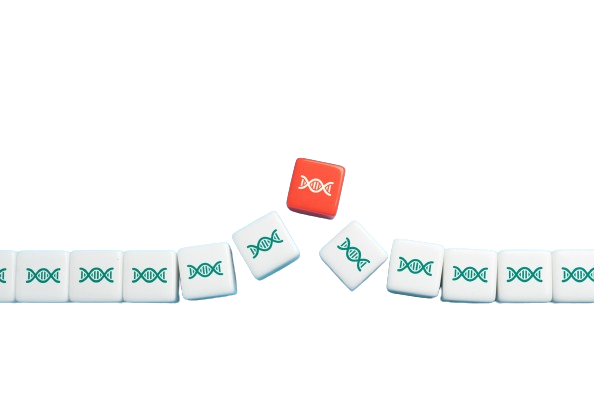World Vitiligo Day
World Vitiligo Day is celebrated on June 25th to raise awareness about vitiligo, educate the public about the condition, and support individuals who are living with vitiligo. The date was chosen to coincide with the birthday of Michael Jackson, who publicly disclosed his struggles with vitiligo. He openly spoke about his condition and its impact on his life, becoming a prominent figure in raising awareness about vitiligo and promoting acceptance of individuals with the condition.
In 2011, the Vitiligo International Foundation (VIF) proposed the establishment of World Vitiligo Day on June 25th as a way to honor Michael Jackson and use his influence to shed light on vitiligo globally. The date serves as a reminder of the challenges faced by individuals with vitiligo and emphasizes the importance of understanding, support, and equality.
Understanding Vitiligo: Causes, Phases, and Associated Autoimmune Conditions
Vitiligo is a common autoimmune disease that gradually affects the melanocytes in the skin, leading to the development of patchy areas with reduced pigmentation. It often occurs on the face and other visible parts of the body. It typically begins in younger individuals and persists throughout life. Vitiligo is a prevalent condition, affecting approximately 0.5% to 2% of the global population, irrespective of race or gender.
Moreover, individuals with vitiligo and their close family members have a higher likelihood of experiencing other autoimmune conditions such as thyroid disease, type 1 diabetes, pernicious anemia, rheumatoid arthritis, Addison’s disease, and lupus.
Phases of Vitiligo
Vitiligo is generally divided into two phases: the active phase and the stable phase.
During the active phase, the immune system attacks the melanocytes, impeding melanin production and resulting in the appearance of depigmented spots. This phase is typically aggravated by sun exposure and lasts for around 3-4 months.
In the stable phase, the immune system ceases its attack on the melanocytes. During this phase, sun exposure tends to be beneficial and lasts for approximately 9 months.
There are different therapies indicated for each of the phases.
Therapies for the active phase
- Topical and oral corticosteroids
Topical corticosteroids (TCS) are commonly used as a first-line treatment either alone or in combination with phototherapy or other topical agents. Examples of prescribed TCS include betamethasone dipropionate, clobetasol dipropionate, and mometasone furoate. Systemic corticosteroids can stop the progression of the disease and promote repigmentation, especially when used early on. In some cases, complete repigmentation may occur.
- Calcineurin inhibitors
Tacrolimus and pimecrolimus are alternative treatments that can be used alone or in combination with phototherapy. They are as effective as topical steroids but have a safer profile. Topical tacrolimus stimulates melanocyte growth and reduces TNF-α levels, promoting repigmentation. It is particularly effective on the face and neck and can be used with phototherapy or occlusive dressings.
- Topical vitamin D3 analogues
Calcipotriol is effective when used in combination with TCS, especially in difficult-to-treat areas such as the eyelids. The advantage of using calcipotriol with phototherapy is not clear.
- Immunosuppressive agents
Although vitiligo is an autoimmune condition, immunosuppressive therapies have not shown significant benefits. There are isolated case reports of improvement with methotrexate. It’s worth noting that vitiligo seems to provide a protective effect against melanoma and non-melanoma skin cancers, as studies have found a reduced risk compared to patients without vitiligo.
Therapies for the stable phase
- Phototherapy
Narrowband-ultraviolet B (NB-UVB) phototherapy has emerged as an effective treatment for vitiligo. It can be used as monotherapy or in combination with topical or systemic agents. The exact mechanism of action is unknown, but it is believed that phototherapy reduces inflammation while stimulating melanocytes within the hair follicle. Studies have shown that re-pigmentation persists in around 80% of patients one year after discontinuing phototherapy. Phototherapy can also be delivered using an excimer laser (308 nm), which is suitable for localized vitiligo and pediatric patients.
Another benefit of phototherapy as a primary or maintenance therapy is the ability for it to be conducted at home. Phototherapy for vitiligo is usually done 2 to 3 times per week, and home-based treatment can make it easier for patients to adhere to such treatment schedules and therefore potentially improve outcomes.
- Use of Piperine in Vitiligo
Reactive oxygen species (ROS) play a role in the development of vitiligo. Piperine, a component found in black pepper, has been studied for its ability to reduce oxidative stress and promote repigmentation. Topical application of piperine, either alone or in combination with UVR therapy, has shown effectiveness in treating hypopigmentation disorders like vitiligo. Unlike other treatments, piperine does not interact with DNA and does not increase the risk of melanoma.
- Pigmerise® Liposomal Cream
Pigmerise® Liposomal Cream is a cream gel containing a natural extract from black pepper. It is recommended as an adjunctive treatment for hypopigmentation disorders. The cream is formulated for rapid and proper absorption, delivering the active components to the deep layers of the skin. It is safe and effective, with or without UVB therapy, and can be used on sensitive skin, difficult-to-treat areas, and in children.

A study was conducted to evaluate the effectiveness of Pigmerise® Liposomal Cream in combination with UVB phototherapy. The study enrolled 50 patients with generalized vitiligo and symmetrical lesions. The treatment involved phototherapy for the first six weeks, followed by the introduction of topical treatment with Pigmerise® on one side of the body The study found that the combination of Pigmerise® with phototherapy induced pigmentation and considerably shortened the duration of phototherapy treatment. No significant side effects were reported, and the treatment was well-accepted by the patients. You can read more about the product at https://fagron.com/brands/pigmerise/
World Vitiligo Day emphasizes the importance of ongoing support and research for those affected by vitiligo. Innovative solutions, like Pigmerise® Liposomal Cream, have shown effectiveness in promoting repigmentation and shortening the duration of phototherapy treatment. We reiterate the importance to note that the treatment should be discussed with a healthcare professional who can provide personalized advice and guidance based on individual circumstances.





